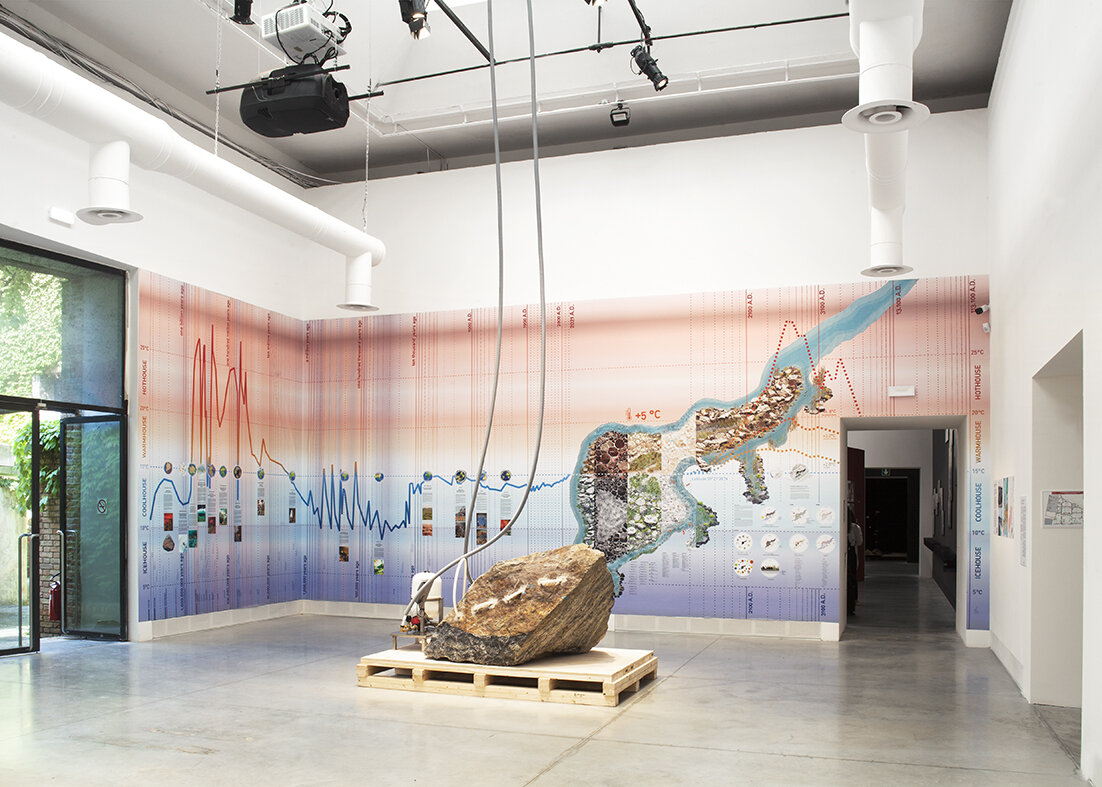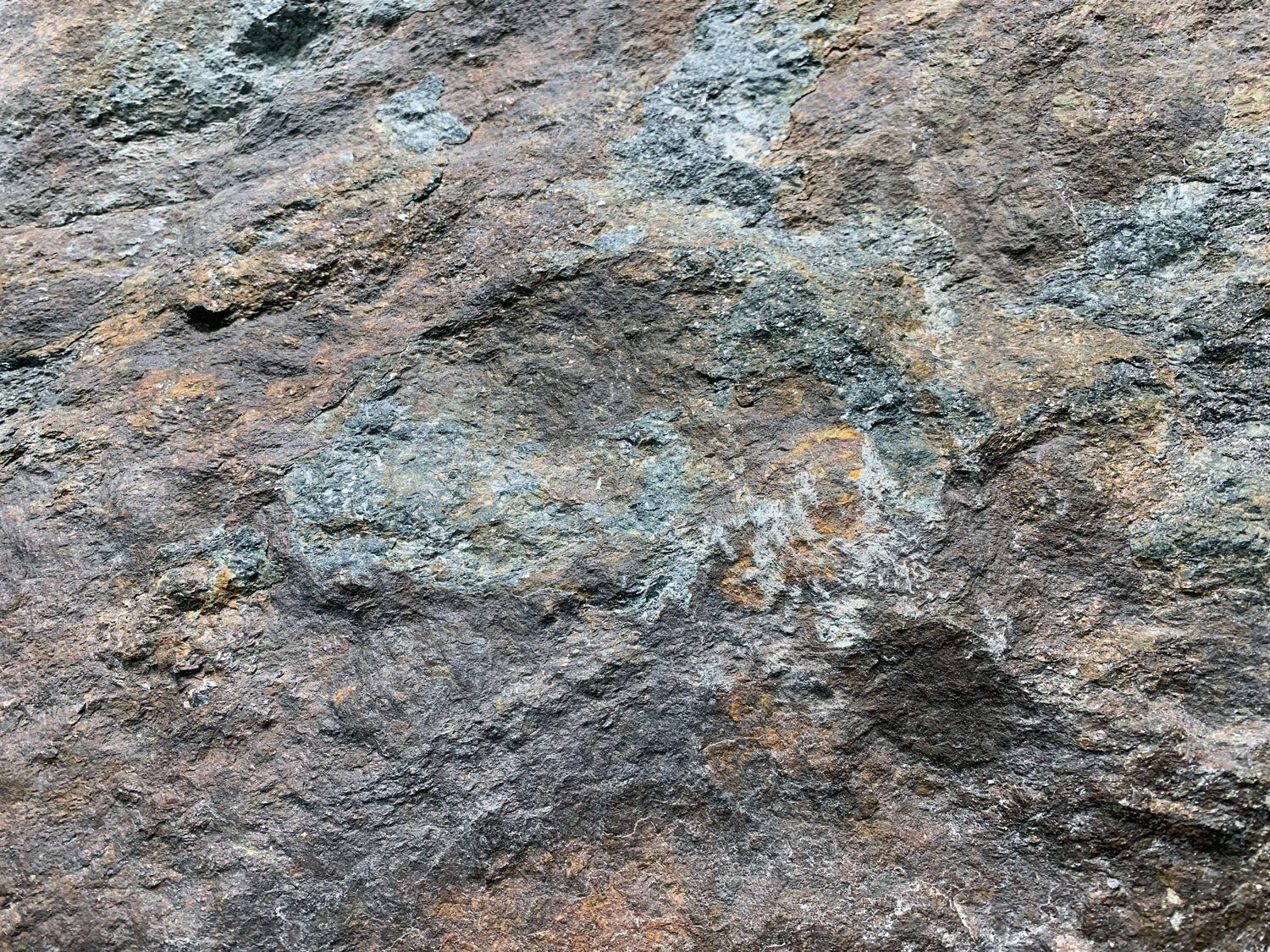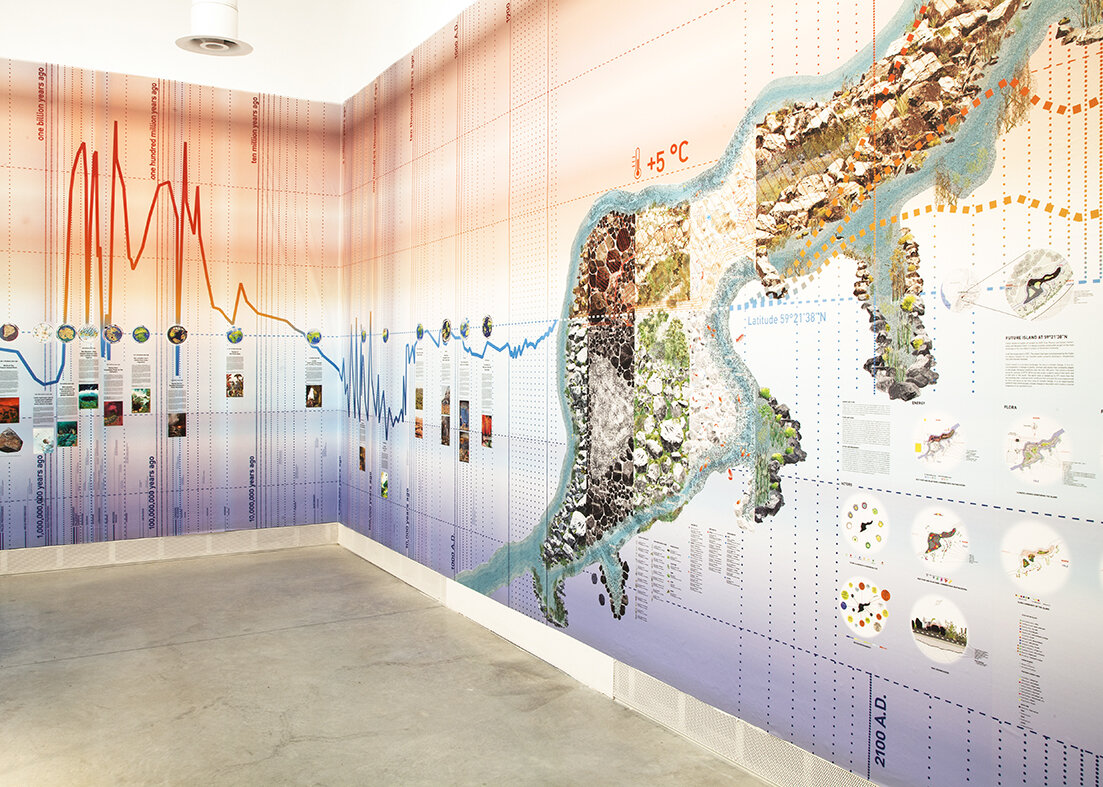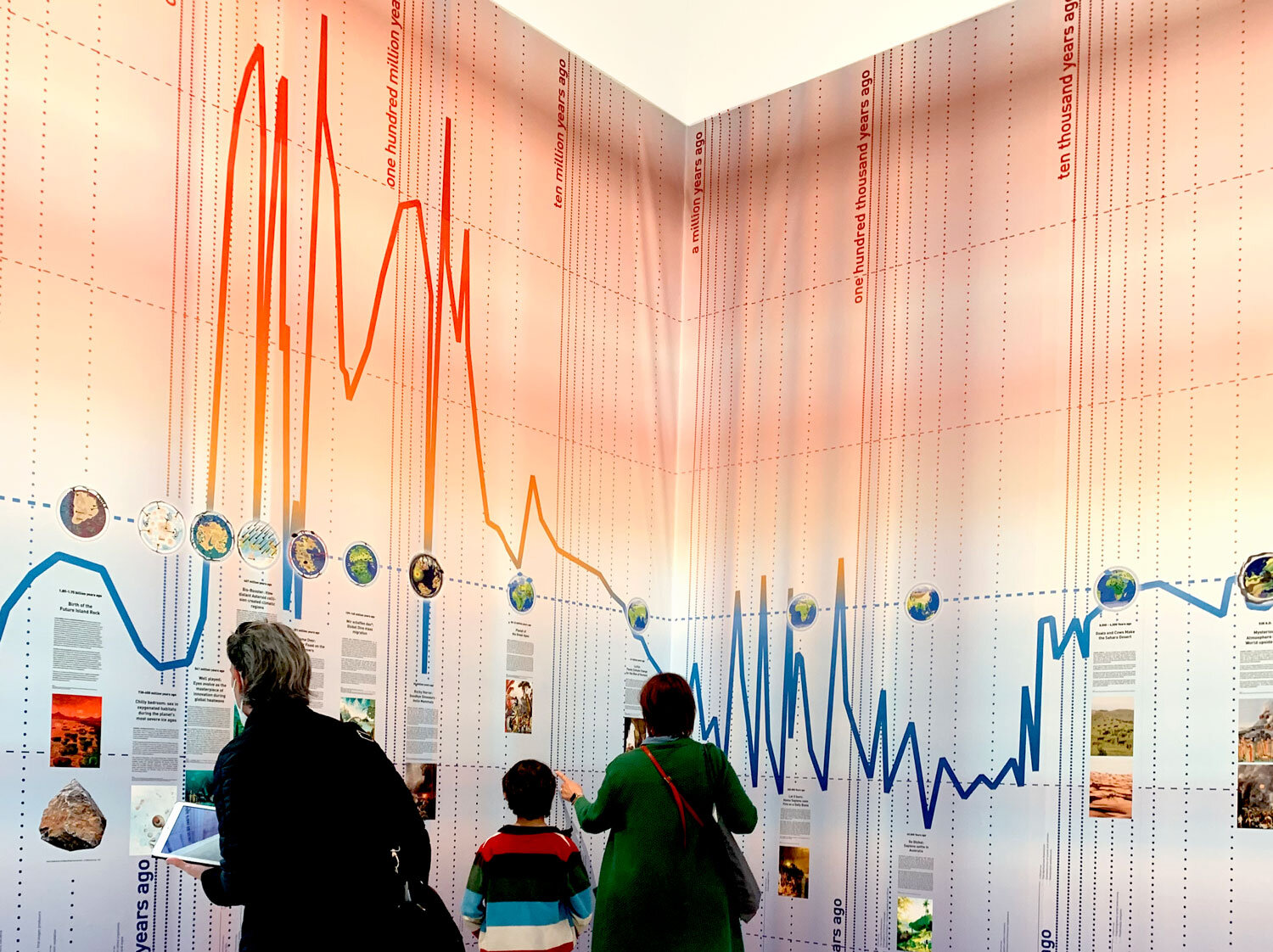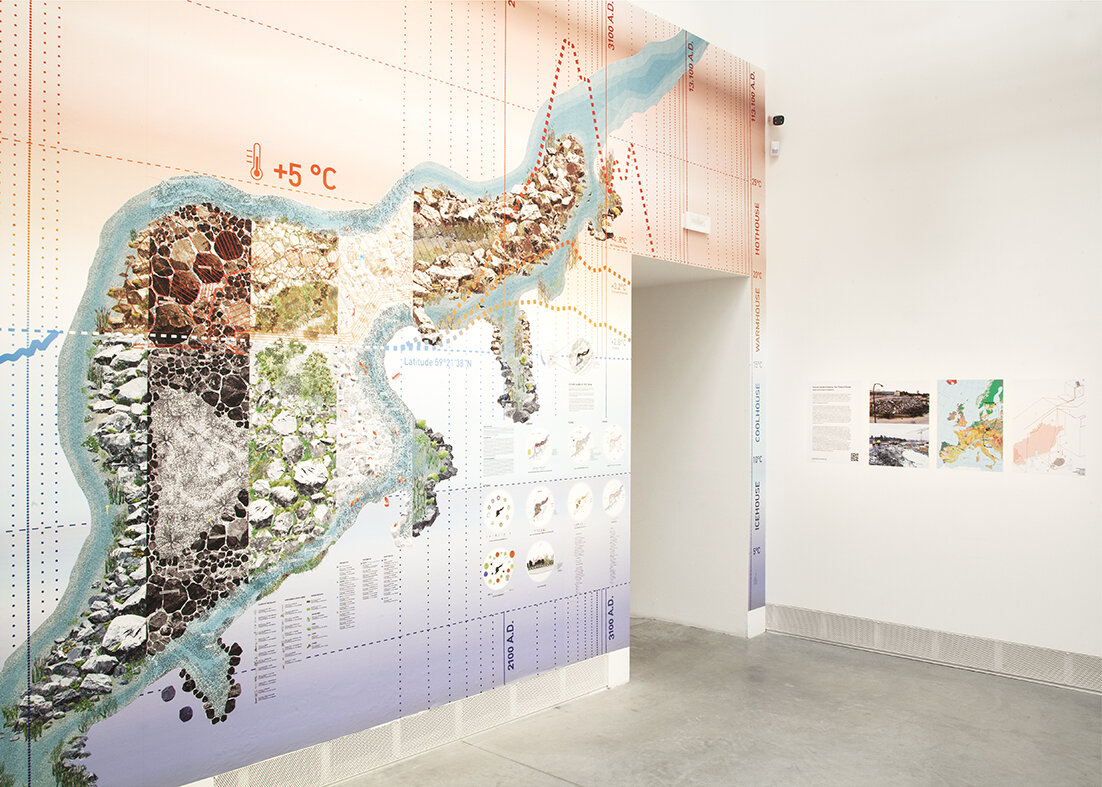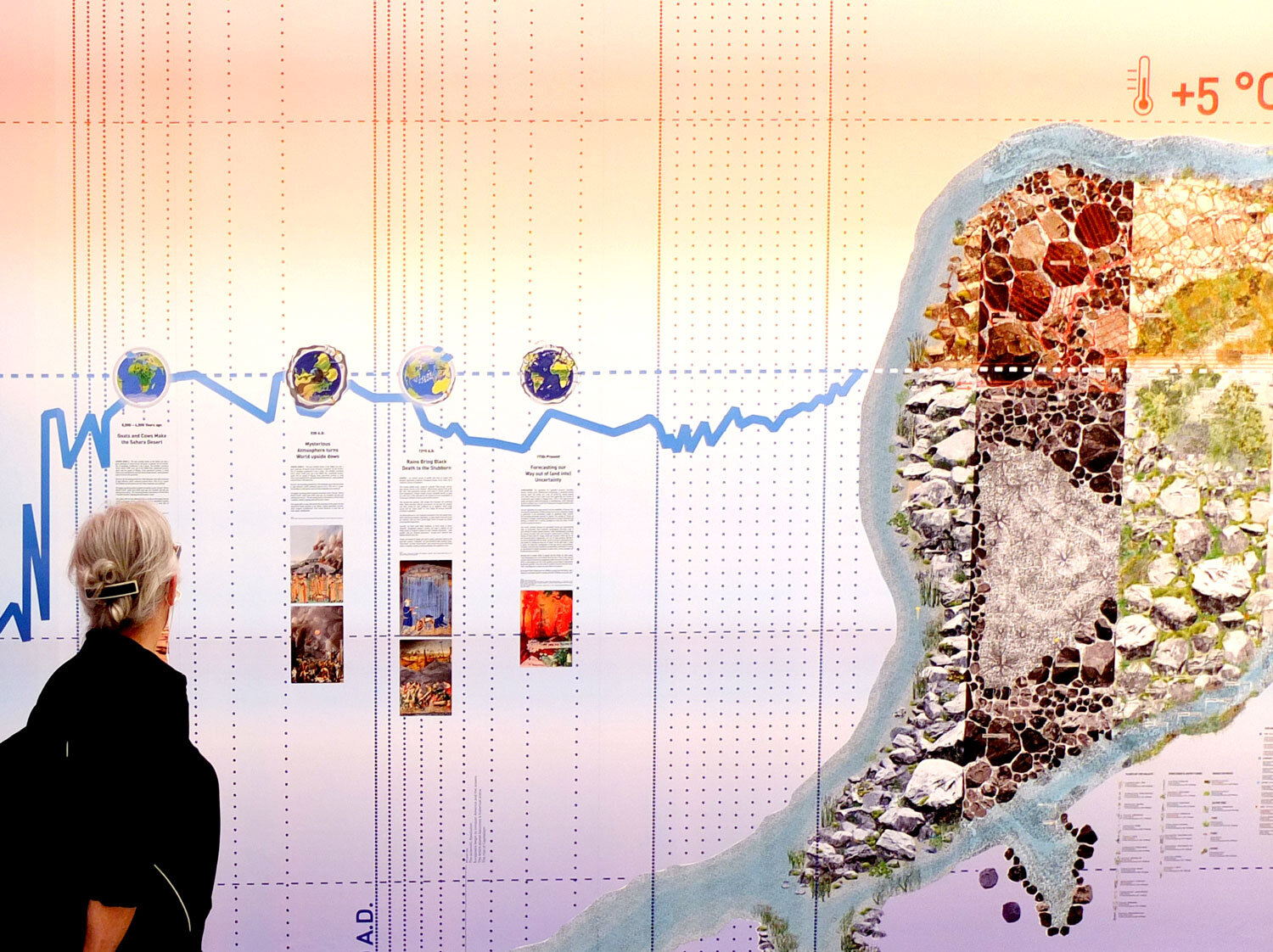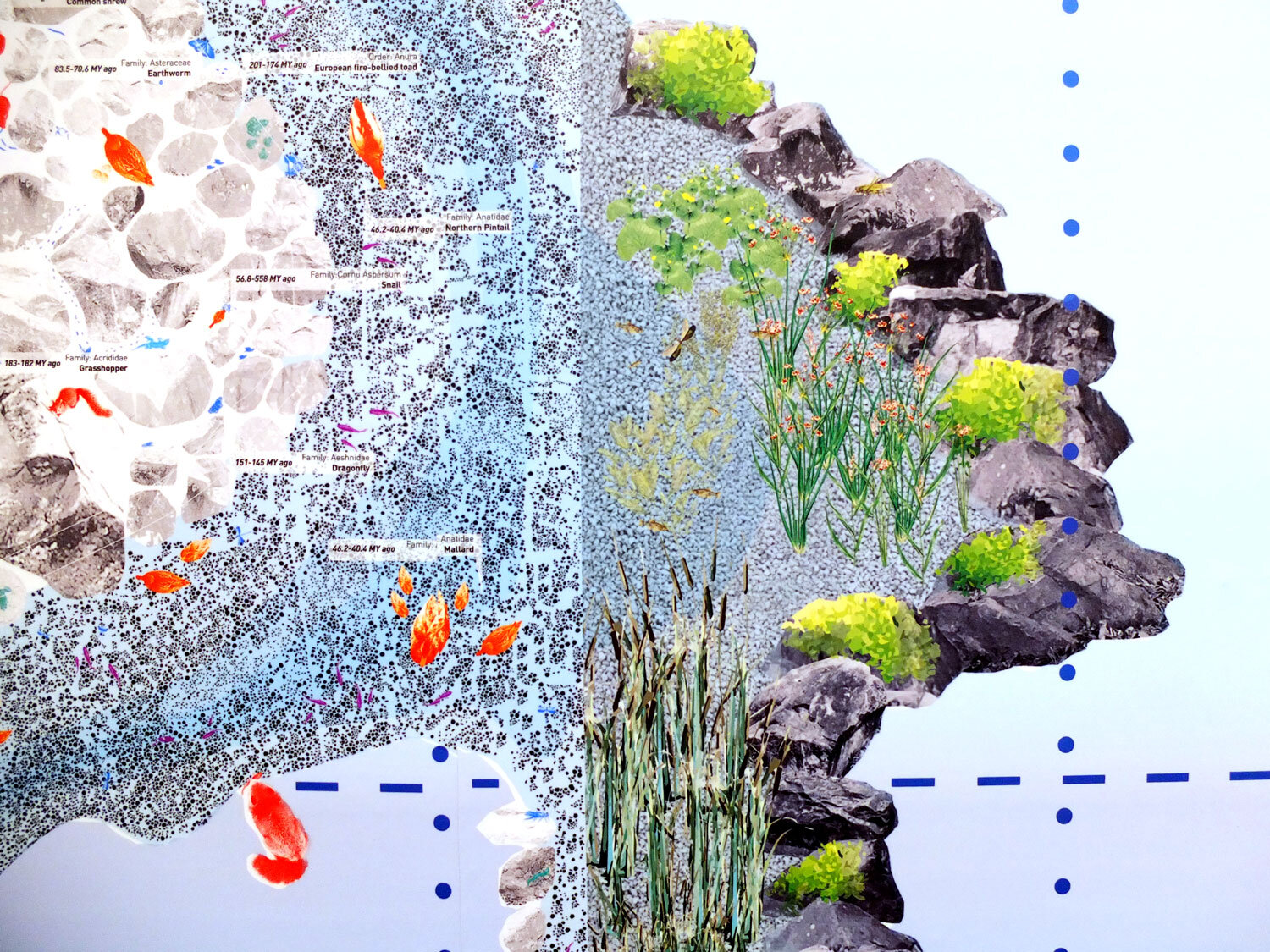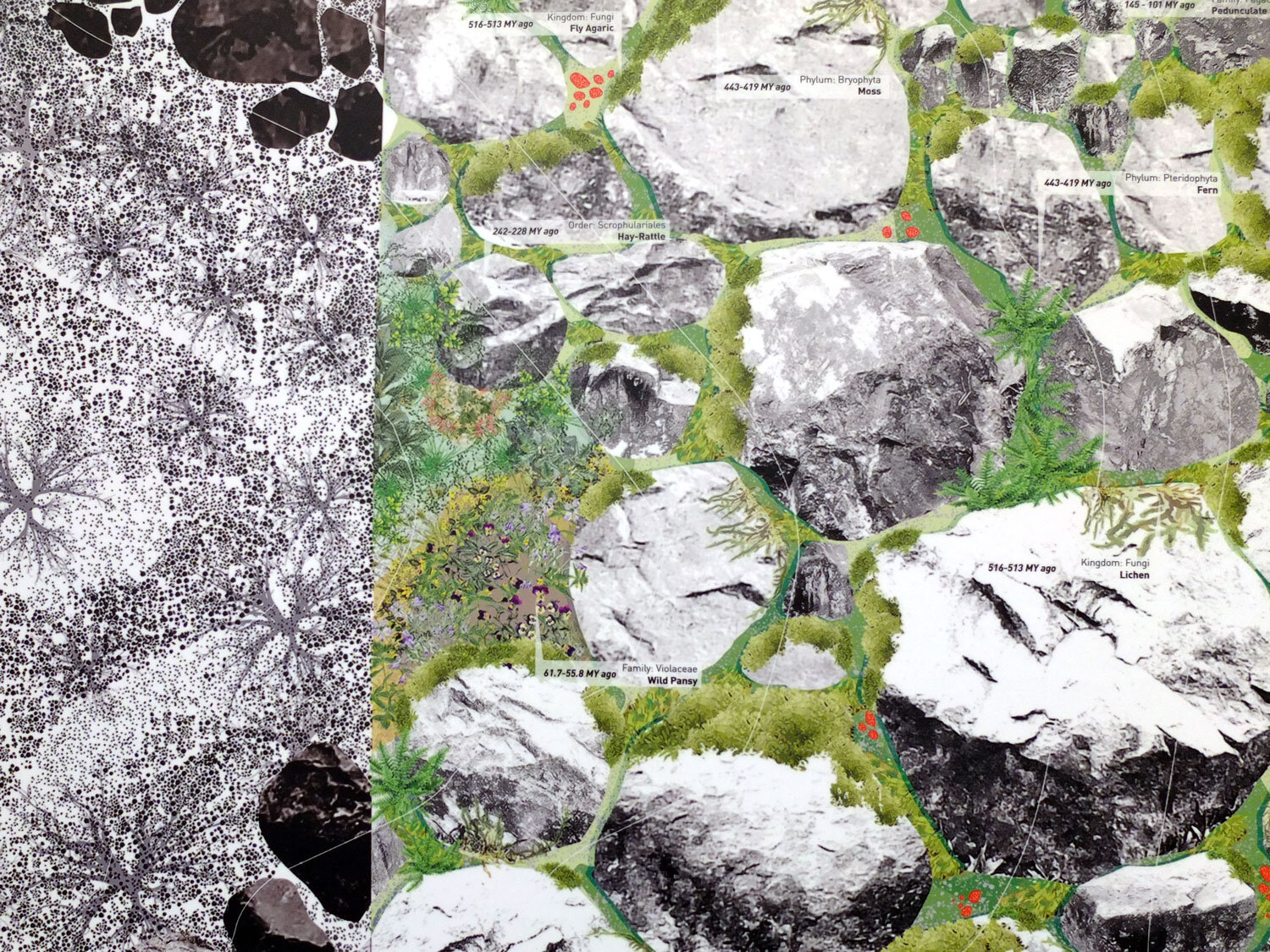Venice Biennale
17th International Architecture Exhibition – La Biennale di Venezia
Central Pavilion
Future Island in Venice: The Time of Stone
Exploring Concepts of Adaptation
The current discourse around climate change focuses on mitigation as a means to preserve our way of life, but most of natural history has been a history of adaptation to, rather than a stubborn avoidance of, inevitable change. While it is very necessary to reduce greenhouse gases in order to avoid planetary catastrophe, the simple truth is that we will also need to learn from nature in order to adapt to a changing environment.
Future Island in Venice, Heated Rock Prototype and Wall Graphic, Central Pavilion © N.M. Gandolfi
Our house, planet Earth, has already witnessed a number of extreme climate crises, with all the corresponding mass extinctions and explosions of life that followed. This 4,543-billion-year logarithmic timeline—increasing detail towards the present—features Earth's shifting temperature as a protagonist, alternating between icehouses and greenhouses and offering habitats for evolving forms of life. Fifteen episodes illustrate how evolving life forms have not only continuously adapted to changing environments but became themselves the architects of more suitable habitats in order to evolve further. In the distant past, drastic temperature changes (+15˚C to -5˚C compared to the current average) were caused by either external or internal interferences with Earth’s ecosystems, such as asteroids or volcanism.
Future Island in Venice, Heated Rock Prototype and Wall Graphic, Central Pavilion © N.M. Gandolfi
In the recent past, human beings were the first species that was able to progressively increase their collective influence on Earth’s systems in such a way that the consequences are now almost comparable to an asteroid impact. Only 2.5 million years ago, humans entered the scene at exactly the moment when greenhouse Earth had cooled down to a relative flatline global average temperature around 14˚C degrees. Minor fluctuations have still pulled levers behind the curtains of cultural development, drowning empires and exposing the fallacy in architecture's sense of permanence. For several millennia, humans have adapted to climate changes and in turn caused temperatures to waver further. Recognising that the temperature line is likely to climb much higher within this century, Future Island is a landscape intervention in Stockholm, Sweden that simulates global warming conditions by artificially heating half of the island +5˚C: a conversation piece that observes how flora, fauna and humans adapt to warmer temperatures. It challenges us to redefine adaptation not as a mere reaction but as an opening up of possibilities.
Future Island in Venice consists of two parts:
1- The Experience: One of the stones from Future Island, an original prototype of a heated rock, has been transported from Sweden to Venice and installed in the exhibition. It is heated by a solar collector on the roof of the Central Pavilion in the Giardini.
2- The Wall: Architectural and process drawings explore past and future stories of adaptation, questioning and contemplating the obstinate tendency of our global society and architecture to focus on mitigating climate change in order to preserve an artificial way of life, rather than adapting to it.
© OOZE 2021
© OOZE 2021
Learn morE about Future Island
© OOZE 2021 - All website contents are copyright protected



